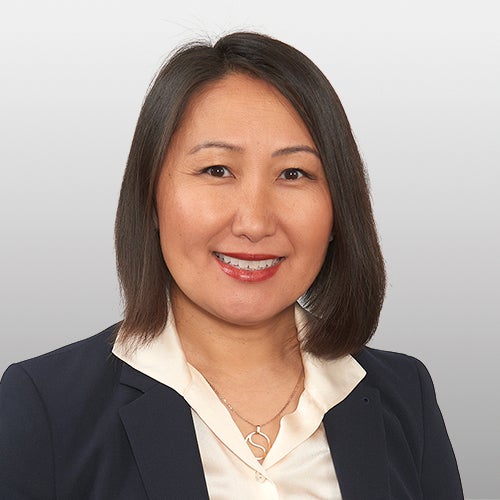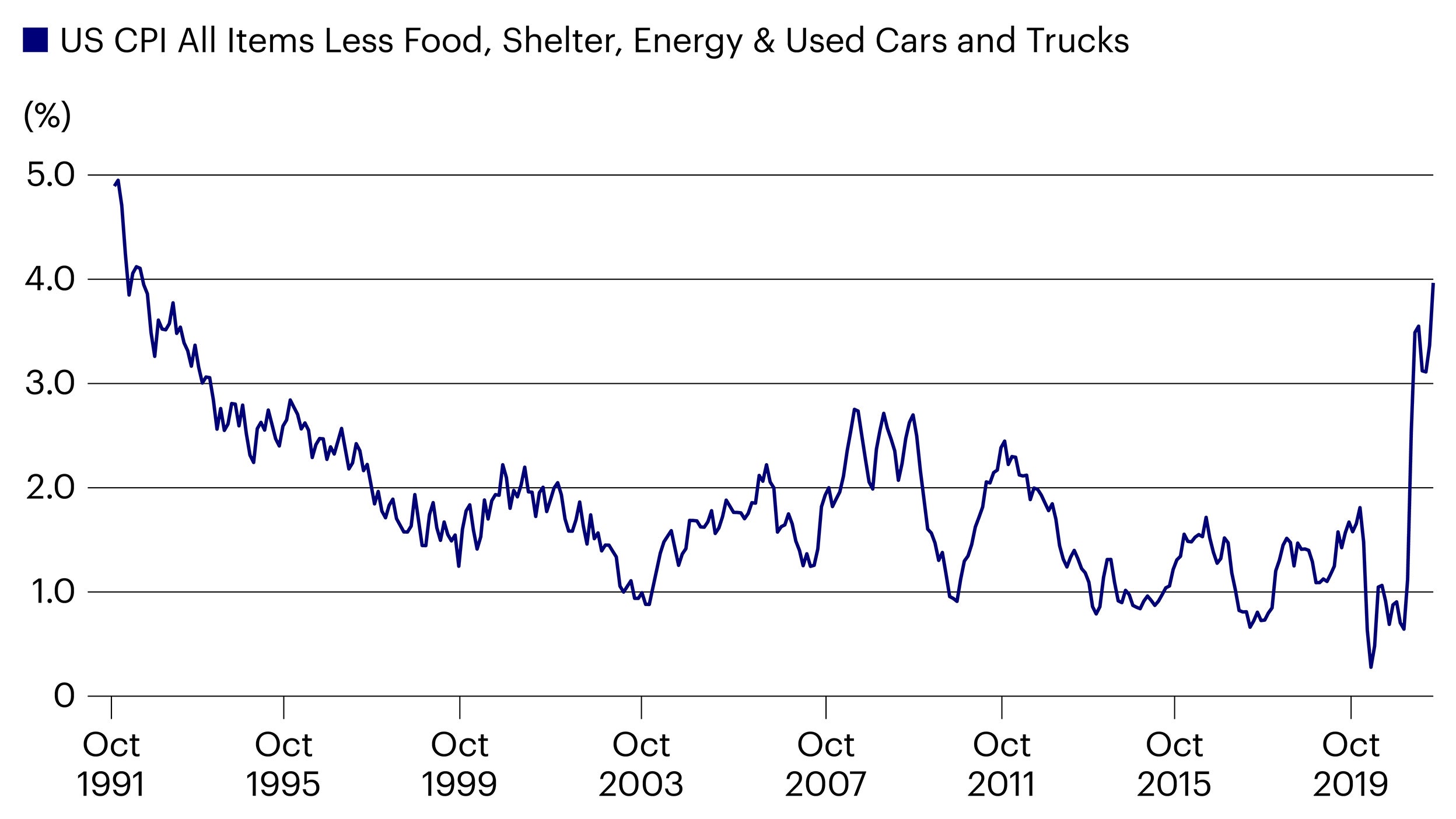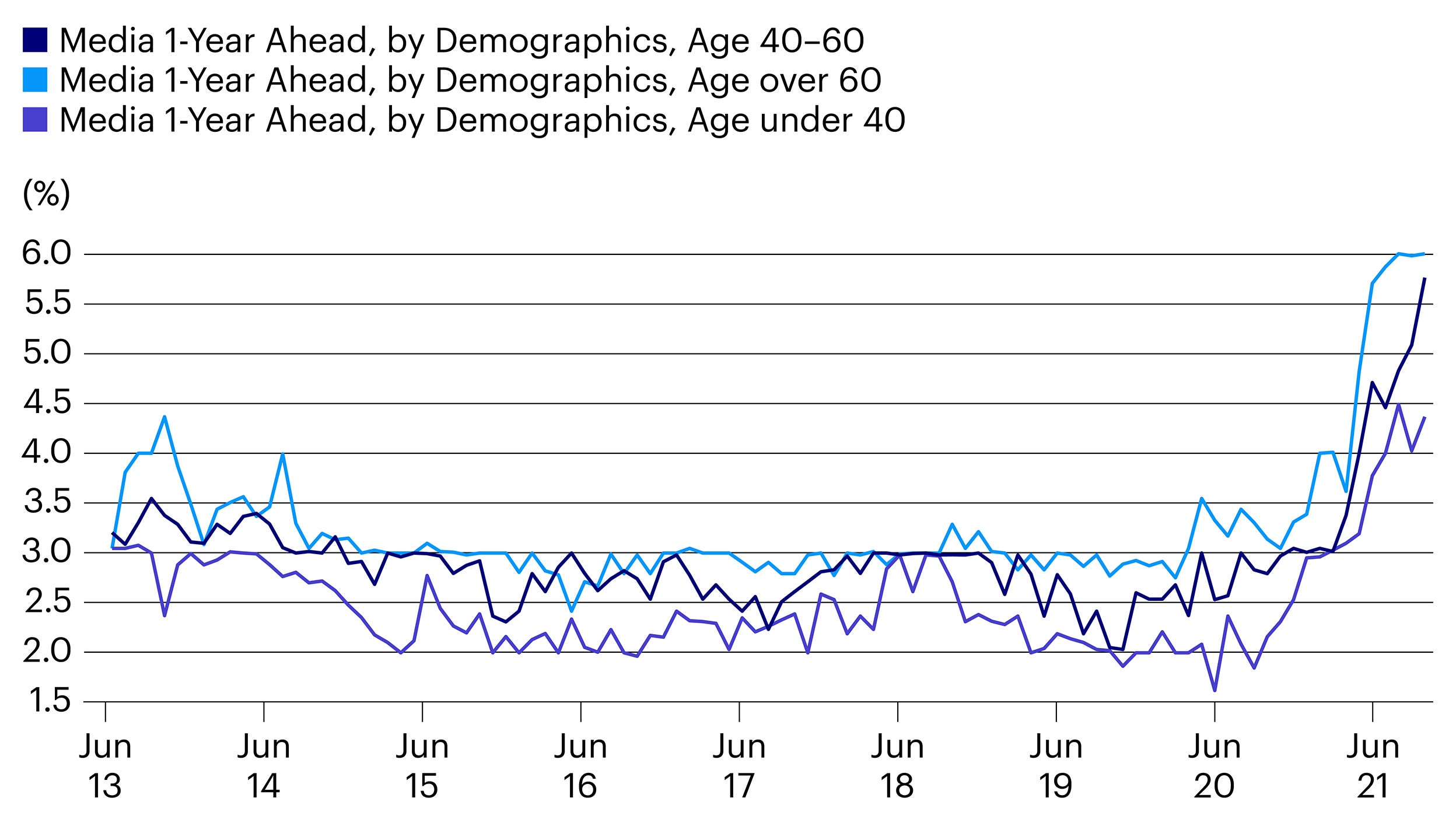On the other side of the coin, betting too hard against central banks has been a widow-maker trade for many investors in recent years, so I don’t want the low duration position to be a ‘make or break’ feature. It’s something I can manage actively. However, it will take a pronounced increase in yields for me to substantially change my low duration strategy.
This view of inflation risk leaves me happy to continue holding equites (currently 50% of the fund including derivatives exposure) which we think will deliver better returns than bonds in an inflationary environment. While I worry about what a sharp rise in interest rates may do to risk assets with rich valuations, for the time being, this is not the most likely outcome in my judgement. Our equity exposure is well-diversified and balanced with less sensitivity to interest rate rises than the market.
Generating income from emerging markets
It might seem strange for me to be thinking about emerging markets having just argued that US interest rates are likely to rise from this point. After all, higher US rates and a stronger US dollar have often been the signal of challenging periods for emerging markets.
However, if as a portfolio manager you think about all the things that could go wrong, you risk talking yourself out of doing anything with the portfolio at all. So, although I am aware of the potentially difficult backdrop, there are still yields out there that are big enough to pique my interest. I am also comforted by the fact that emerging markets often enjoy strong external balances and expanding local investor bases.
I should also explain that, for me, finding yield in emerging markets is not about a wholesale asset allocation shift, but instead a very selective approach. More spear-fisher than trawler. In recent weeks I have bought small positions in Nigeria, Egypt and Ukraine, among others. I am getting paid mid-7% yields on these bonds which is a fair reward for the risk in my view.
Of course, I expect these bonds to move around a bit. Indeed, they are all a bit weaker since I bought them. But, all things considered, I believe they have a good medium-term return profiles.
The bonds I mentioned are denominated in US dollars and, as such, the currency volatility has no impact on the expected returns. However, there are some countries that are way ahead of the Federal Reserve in their tightening cycles. For example, Russia and Brazil have increased their base interest rates significantly and we are getting paid higher interest rates in the local currency that offer us a cushion for currency volatility. I do not think a well-telegraphed and measured Fed tightening cycle will have a significantly negative impact on these rates and currencies.
When to back out of high yield and subordinated financials
What to do with the overall level of high yield credit risk has been a real dilemma for me. I need to generate income but taking duration risk doesn’t get me there. Equities can certainly contribute but credit risk is a key part of this income-oriented strategy and I need to have some exposure.
Furthermore, the feedback from our team’s credit analysts about general corporate performance is pretty sanguine at the moment. This month, there have been a raft of quarterly results with many companies reporting good or better than expected results – M&S, the UK retailer, Coty (beauty products), Darling Ingredients, Refresco (beverage bottler), British Land, Bayer and Schaeffler, to name a few.
Set against that are the low yields. My starting point is that the fundamentals are strong, but the price upside is somewhat limited. As a result, I have relatively modest levels of exposure in the portfolio (high yield corporates constitute 14% of the fund). However, I am also reluctant to exit entirely because they still produce income and there is little by way of credit risk for me to worry about.
Part of the income is drawn from subordinated bonds (higher risk) of financial institutions, like banks and insurance companies. These have embedded equity-like features but behave like bonds in benign market conditions. So far, our exposure has performed well. It feels to me that there is very little upside in price, as is the case with high-yield bonds, but we can continue to receive coupons.
Defensive duration, long equity
As you can see, I am defensive in duration but happy to maintain our long equity risk so long as US interest rates don’t rise too rapidly. For the time being I think the portfolio is well-placed for a steadily rising yield environment, but I will be watching inflation data and the Fed’s reaction to it.
In credit, I am moving very selectively in emerging markets where we can find some decent yields but am keeping my high yield component quite conservative. I am still constructive on our bank exposures and will be watching risk and reward between bonds and equity in the coming year.
I’ll leave my equity position intact, while closely watching valuations and volatility.








